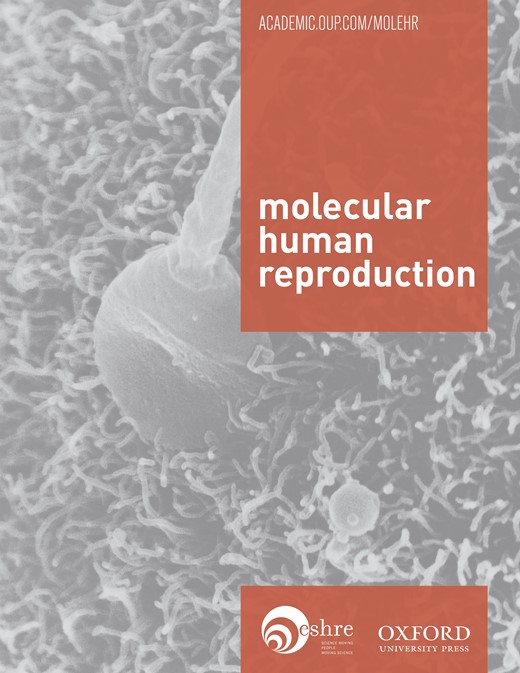-
PDF
- Split View
-
Views
-
Cite
Cite
S. Tabibzadeh, The signals and molecular pathways involved in human menstruation, a unique process of tissue destruction and remodelling, Molecular Human Reproduction, Volume 2, Issue 2, 1 February 1996, Pages 77–92, https://doi.org/10.1093/molehr/2.2.77
Close - Share Icon Share
Abstract
Human endometrium is a specialized tissue that undergoes sequential phases of proliferation and secretory changes in order to support the implantation and growth of an embryo. If implantation does not occur, this tissue rapidly undergoes dissolution during the menstrual period. Tissue shedding during menstruation is associated with significant apoptosis, disordered expression of adhesion molecules, loss of filamentous (F) act in from cell borders and fragmentation of endometrial glands. On the other hand, compromise of integrity of vessels and dissolution of the extracellular matrix leads to bleeding and tissue dissolution. The processes of bleeding and tissue shedding during menstruation are precisely controlled by a number of systemic and local factors. The systemic signal that leads to menstruation is the withdrawal of the steroid hormones. The available evidence suggests but does not yet prove that tumour necrosis factor (TNF)-α may serve as the local signal contributing to the processes of menstrual shedding and bleeding. Secretion of metalloproteinases and their subsequent activation induced by plasmin facilitates degradation of extracellular matrices and bleeding. The menstrual process ceases by secretion of steroid hormones directly or through regulation of production or activation of signals that lead to tissue shedding and bleeding.



